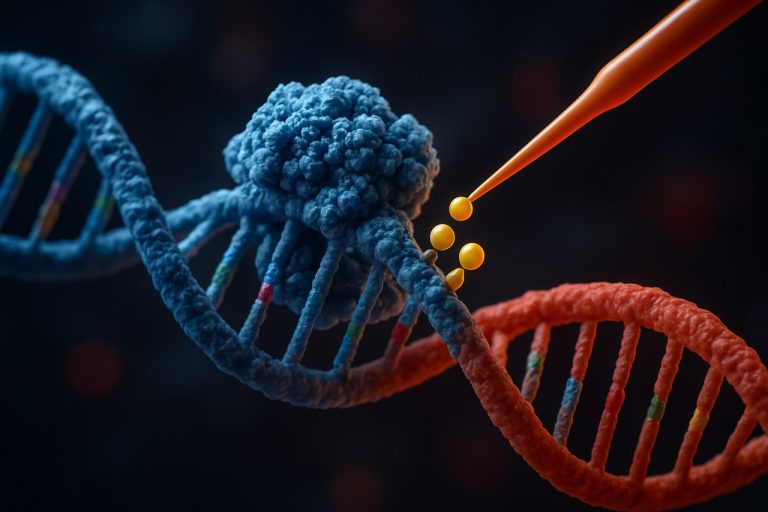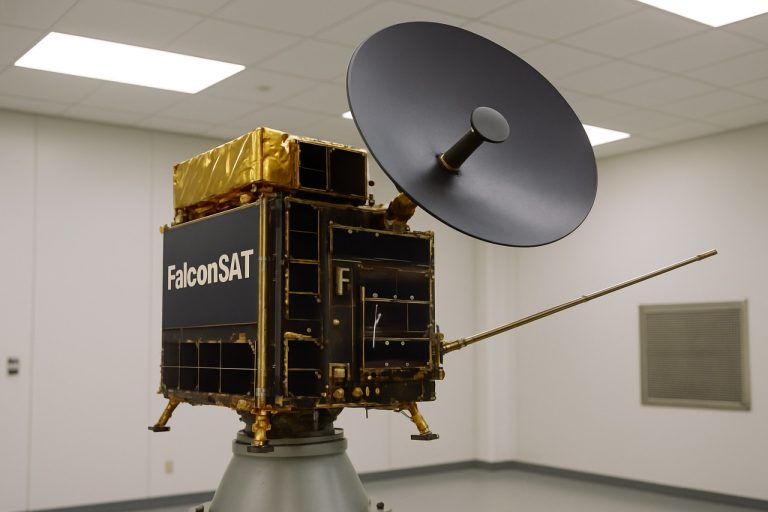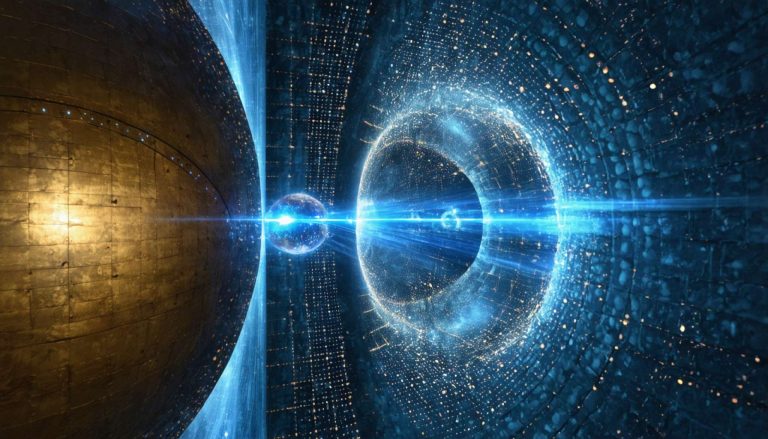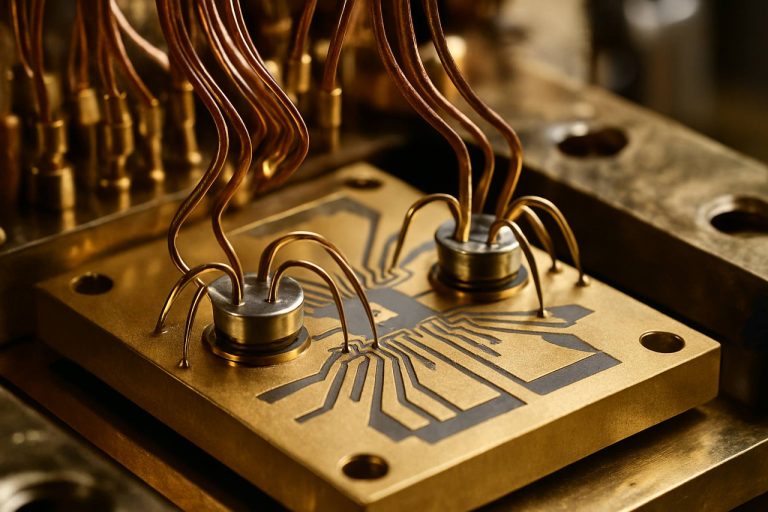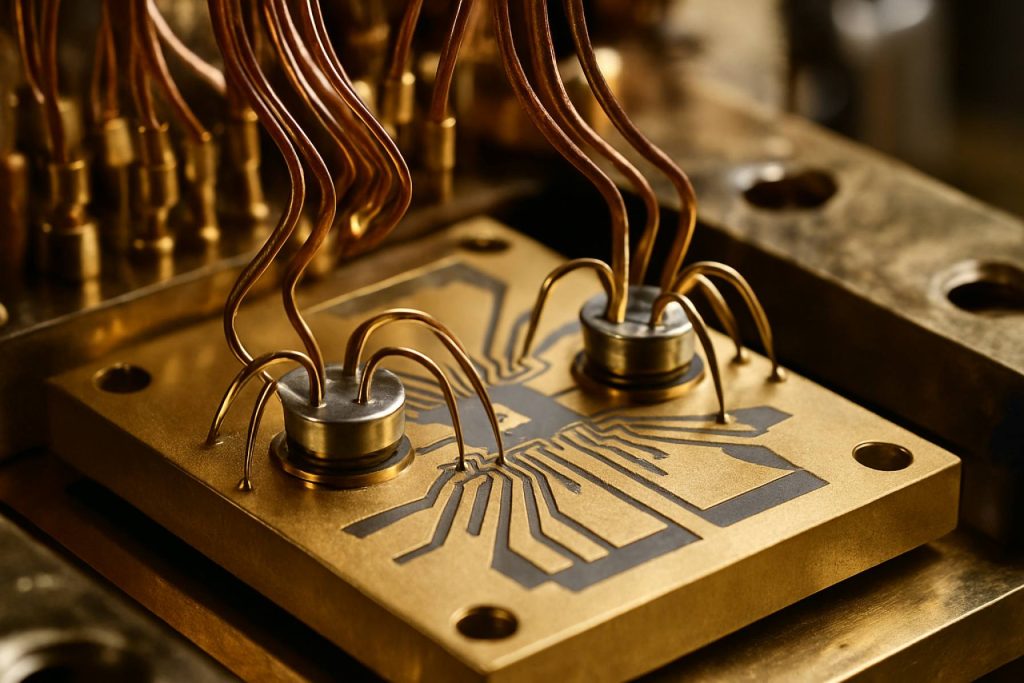
Unlocking the Secrets of Quantum Coincidence Detection in Superconducting Qubits: How Cutting-Edge Techniques Are Transforming Quantum Information Science
- Introduction to Quantum Coincidence Detection
- Fundamentals of Superconducting Qubits
- Mechanisms of Coincidence Detection in Quantum Systems
- Experimental Techniques and Instrumentation
- Challenges in Achieving High-Fidelity Coincidence Detection
- Recent Breakthroughs and Case Studies
- Implications for Quantum Computing and Information Processing
- Future Directions and Open Research Questions
- Conclusion: The Road Ahead for Quantum Coincidence Detection
- Sources & References
Introduction to Quantum Coincidence Detection
Quantum coincidence detection is a pivotal technique in the study and manipulation of quantum systems, particularly in the context of superconducting qubits. This method involves the simultaneous measurement of correlated quantum events, such as the detection of photons or the readout of qubit states, to reveal underlying quantum correlations and entanglement. In superconducting qubit architectures, coincidence detection enables the verification of non-classical phenomena, such as Bell inequality violations and quantum teleportation, by ensuring that measurement outcomes are not the result of classical noise or independent events but are instead fundamentally linked by quantum mechanics.
The implementation of quantum coincidence detection in superconducting circuits typically relies on high-fidelity, time-resolved measurement apparatus capable of resolving events on nanosecond timescales. This is crucial for distinguishing genuine quantum correlations from accidental coincidences caused by detector dark counts or thermal noise. Recent advances in cryogenic microwave electronics and fast signal processing have significantly improved the temporal resolution and efficiency of these measurements, allowing for more robust tests of quantum nonlocality and the development of scalable quantum networks. For instance, experiments conducted by National Institute of Standards and Technology (NIST) and IBM Quantum have demonstrated the use of coincidence detection to characterize entangled states and validate quantum error correction protocols in multi-qubit systems.
Overall, quantum coincidence detection serves as a foundational tool for both fundamental quantum physics research and the practical realization of quantum information processing with superconducting qubits, enabling the exploration of quantum correlations that are essential for advanced quantum technologies.
Fundamentals of Superconducting Qubits
Superconducting qubits are artificial two-level systems fabricated using superconducting circuits, typically based on Josephson junctions. These qubits leverage macroscopic quantum coherence to encode and manipulate quantum information, making them a leading platform for quantum computing. The fundamental operation of superconducting qubits relies on the non-linear inductance of Josephson junctions, which allows for the creation of discrete energy levels that can be coherently controlled using microwave pulses. The most common types include transmon, flux, and phase qubits, each with distinct advantages in terms of coherence times, control, and scalability.
Quantum coincidence detection in this context refers to the simultaneous measurement of correlated quantum events, such as the joint detection of photons or excitations in multiple qubits. This capability is crucial for probing entanglement, verifying quantum correlations, and implementing quantum error correction protocols. In superconducting circuits, coincidence detection often involves dispersive readout techniques, where the state of each qubit is inferred from the response of a coupled resonator. High-fidelity, time-resolved readout is essential to distinguish true quantum coincidences from accidental ones, which can arise due to noise or measurement imperfections.
Recent advances have enabled the integration of fast, multiplexed readout architectures and quantum-limited amplifiers, significantly improving the temporal resolution and signal-to-noise ratio of coincidence measurements. These developments are foundational for scalable quantum information processing and for exploring fundamental quantum phenomena such as Bell inequality violations and quantum nonlocality in solid-state systems (National Institute of Standards and Technology; IBM Quantum).
Mechanisms of Coincidence Detection in Quantum Systems
Coincidence detection in quantum systems, particularly in superconducting qubits, relies on the ability to identify simultaneous or near-simultaneous quantum events across multiple qubits or measurement channels. In these systems, coincidence detection mechanisms are crucial for probing entanglement, verifying quantum correlations, and implementing quantum error correction protocols. Superconducting qubits, such as transmons, are typically coupled to microwave resonators, enabling high-fidelity readout of their quantum states. Coincidence detection is achieved by monitoring the output signals from these resonators and identifying correlated measurement outcomes within a defined temporal window.
A common mechanism involves the use of time-tagged single-shot readout, where the state of each qubit is measured and timestamped with high precision. By analyzing the time series data, researchers can identify coincident events—such as simultaneous state transitions or correlated photon emissions—across different qubits. This process often employs fast analog-to-digital converters and real-time digital signal processing to ensure accurate temporal resolution and minimize false positives due to noise or crosstalk. Advanced setups may also utilize multiplexed readout schemes, allowing for the simultaneous monitoring of multiple qubits with minimal hardware overhead Nature Quantum Information.
Furthermore, coincidence detection mechanisms are integral to the implementation of quantum non-demolition measurements and the verification of Bell-type inequalities in superconducting circuits. These techniques enable the direct observation of quantum entanglement and the validation of quantum protocols, underpinning the development of scalable quantum processors American Physical Society.
Experimental Techniques and Instrumentation
Quantum coincidence detection in superconducting qubits relies on advanced experimental techniques and specialized instrumentation to resolve correlated quantum events with high temporal and spatial precision. Central to these experiments are cryogenic platforms, such as dilution refrigerators, which maintain qubits at millikelvin temperatures to suppress thermal noise and decoherence. Superconducting qubits, typically fabricated from aluminum or niobium on silicon or sapphire substrates, are integrated with coplanar waveguide resonators for high-fidelity readout and control.
Coincidence detection requires the simultaneous measurement of quantum states across multiple qubits. This is achieved using dispersive readout, where the state of each qubit shifts the resonance frequency of its coupled resonator. The resulting microwave signals are amplified by near-quantum-limited amplifiers, such as Josephson parametric amplifiers (JPAs), and digitized using high-speed analog-to-digital converters. Time-correlated single-photon counting modules and field-programmable gate arrays (FPGAs) are employed to process the readout signals in real time, enabling the identification of coincident quantum events with sub-nanosecond resolution.
Synchronization of control and measurement electronics is critical; this is typically managed by precision timing modules and low-jitter clock distribution systems. Additionally, custom software frameworks orchestrate pulse sequencing, data acquisition, and statistical analysis of coincidence events. These sophisticated setups have enabled recent demonstrations of multi-qubit entanglement and violation of Bell inequalities in superconducting circuits, as reported by National Institute of Standards and Technology (NIST) and IBM Quantum. Ongoing improvements in instrumentation continue to push the boundaries of quantum coincidence detection, facilitating more complex quantum information protocols.
Challenges in Achieving High-Fidelity Coincidence Detection
Achieving high-fidelity quantum coincidence detection in superconducting qubits presents several technical and fundamental challenges. One primary obstacle is the presence of noise and decoherence, which can obscure genuine quantum correlations and introduce false positives or negatives in detection events. Superconducting qubits are particularly sensitive to environmental fluctuations, such as thermal noise, electromagnetic interference, and material defects, all of which can degrade the fidelity of coincidence measurements. Additionally, the finite efficiency and bandwidth of microwave photon detectors used in these systems limit the temporal resolution and accuracy of coincidence detection, making it difficult to distinguish between simultaneous and sequential events with high confidence.
Another significant challenge lies in the crosstalk between qubits and readout channels. In multi-qubit architectures, signals from one qubit can inadvertently affect the measurement outcomes of neighboring qubits, leading to spurious coincidences. Advanced circuit design and isolation techniques are required to mitigate these effects, but they often come at the cost of increased system complexity and reduced scalability. Furthermore, the process of reading out qubit states itself can introduce measurement-induced dephasing, further complicating the reliable identification of true quantum coincidences.
Efforts to overcome these challenges include the development of quantum-limited amplifiers, improved qubit coherence times, and more sophisticated error mitigation protocols. Recent advances in cryogenic microwave photon detection and real-time signal processing have shown promise in enhancing detection fidelity, but practical, scalable solutions remain an active area of research Nature Physics Physical Review X.
Recent Breakthroughs and Case Studies
Recent years have witnessed significant breakthroughs in quantum coincidence detection within superconducting qubit systems, driven by advances in both device engineering and quantum measurement techniques. One notable achievement is the demonstration of high-fidelity, time-resolved detection of correlated photon events, which is essential for probing entanglement and nonlocal correlations in multi-qubit circuits. For instance, researchers at National Institute of Standards and Technology (NIST) have developed multiplexed readout architectures that enable simultaneous measurement of multiple qubits, allowing for efficient identification of coincident quantum events with minimal crosstalk and noise.
Another breakthrough involves the use of Josephson parametric amplifiers (JPAs) and quantum-limited amplifiers to enhance the signal-to-noise ratio in coincidence detection. This has enabled the observation of quantum jumps and real-time monitoring of entanglement dynamics, as demonstrated by teams at IBM Quantum and Rigetti Computing. These advances have facilitated the implementation of loophole-free Bell tests and the verification of quantum nonlocality in superconducting platforms.
Case studies also highlight the integration of fast, high-efficiency single-photon detectors with superconducting circuits, as reported by Nature. Such integration has enabled the direct measurement of photon-mediated interactions and the exploration of quantum error correction protocols based on real-time coincidence detection. Collectively, these breakthroughs are paving the way for scalable quantum networks and robust quantum information processing using superconducting qubits.
Implications for Quantum Computing and Information Processing
Quantum coincidence detection in superconducting qubits has significant implications for the advancement of quantum computing and information processing. By enabling the simultaneous detection of correlated quantum events, such as entangled photon or qubit states, coincidence detection enhances the fidelity and efficiency of quantum gate operations and error correction protocols. This capability is particularly crucial for implementing multi-qubit entanglement, which underpins quantum algorithms and secure quantum communication schemes. For instance, high-precision coincidence detection allows for the verification of entanglement and the execution of Bell-state measurements, both of which are foundational for quantum teleportation and entanglement swapping protocols Nature Physics.
Moreover, coincidence detection techniques can be leveraged to suppress false positives arising from noise and decoherence, thereby improving the signal-to-noise ratio in quantum measurements. This is essential for scaling up quantum processors, as the complexity and error rates increase with the number of qubits. In superconducting architectures, fast and reliable coincidence detection supports the implementation of real-time feedback and adaptive control, which are necessary for fault-tolerant quantum computation Nature.
Finally, the integration of quantum coincidence detection with superconducting qubit platforms paves the way for hybrid quantum systems, where information can be coherently transferred between different quantum modalities. This opens new avenues for distributed quantum computing and quantum networks, further expanding the potential applications of quantum information science Science.
Future Directions and Open Research Questions
The field of quantum coincidence detection in superconducting qubits is rapidly evolving, with several promising avenues for future research and a number of open questions that remain to be addressed. One key direction involves improving the temporal resolution and efficiency of coincidence detection schemes. Current technologies are limited by the bandwidth and noise characteristics of superconducting amplifiers and readout resonators, which can obscure simultaneous multi-qubit events. Developing new materials and circuit designs that minimize decoherence and cross-talk will be crucial for enhancing detection fidelity Nature Quantum Information.
Another open question concerns the scalability of coincidence detection protocols. As quantum processors grow in size, the complexity of correlating detection events across many qubits increases exponentially. Efficient algorithms and hardware architectures that can process large-scale coincidence data in real time are needed to enable practical applications in quantum error correction and entanglement verification Nature Physics.
Furthermore, integrating quantum coincidence detection with advanced quantum control techniques, such as real-time feedback and adaptive measurement, could unlock new possibilities for quantum state engineering and error mitigation. The interplay between measurement backaction and coincidence detection also raises fundamental questions about the limits of quantum non-demolition measurements in superconducting circuits Physical Review X.
Addressing these challenges will require interdisciplinary efforts, combining advances in quantum hardware, signal processing, and theoretical modeling to fully realize the potential of quantum coincidence detection in next-generation quantum technologies.
Conclusion: The Road Ahead for Quantum Coincidence Detection
Quantum coincidence detection in superconducting qubits stands at the forefront of advancing quantum information science, offering a pathway to more precise measurements of entanglement, nonlocal correlations, and quantum state verification. As experimental techniques mature, the integration of high-fidelity, low-latency coincidence detection circuits is expected to enhance the scalability and reliability of quantum processors. Future research will likely focus on minimizing noise and crosstalk, improving time resolution, and developing robust error mitigation strategies to address the challenges posed by decoherence and measurement backaction. The adoption of advanced cryogenic electronics and the co-design of hardware and software for real-time data analysis are poised to further accelerate progress in this field.
Moreover, the synergy between quantum coincidence detection and emerging quantum error correction protocols could play a pivotal role in realizing fault-tolerant quantum computation. As quantum networks and distributed quantum computing architectures evolve, coincidence detection will be essential for entanglement distribution and verification across distant nodes. The continued collaboration between experimentalists and theorists, supported by initiatives from organizations such as the National Science Foundation and the National Quantum Initiative, will be crucial in overcoming technical barriers and translating laboratory advances into practical quantum technologies. Ultimately, the road ahead promises not only deeper insights into the foundations of quantum mechanics but also transformative applications in secure communication, sensing, and computation.
Sources & References
- National Institute of Standards and Technology (NIST)
- IBM Quantum
- Nature Quantum Information
- Rigetti Computing
- National Science Foundation
